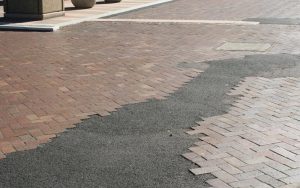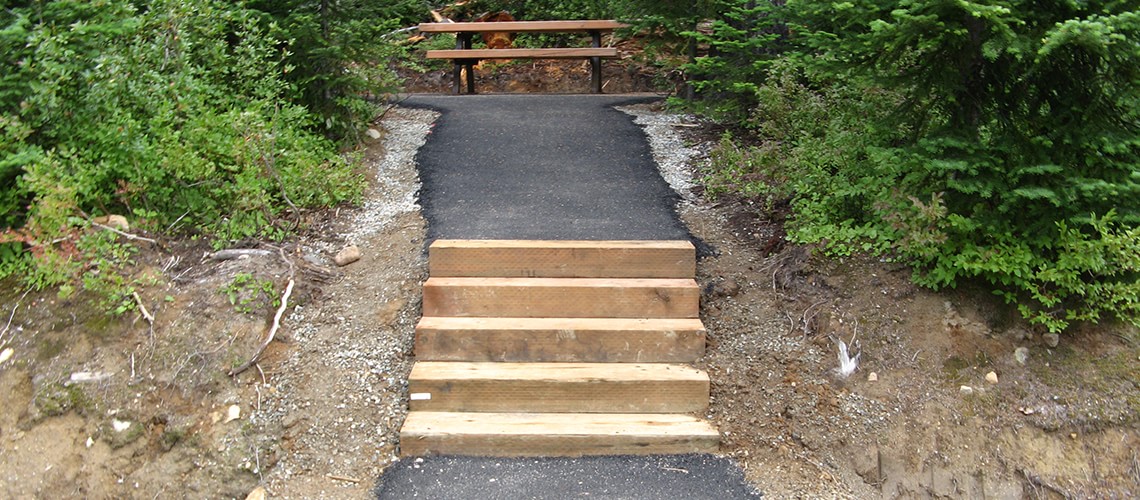Damaged or uneven footpaths and kerbs aren’t just cosmetic problems, they can pose safety risks and even result in costly legal claims. Councils, contractors and property managers need to prioritise timely repairs to keep public areas safe, accessible and compliant.
What Makes a Footpath or Kerb Unsafe?
Unsafe footpaths and kerbs are typically caused by wear, weather, or ground movement. Left untreated, they can turn into serious trip hazards. Common examples include:
- Uneven or lifted concrete slabs in footpaths
- Cracked or broken kerb edges
- Raised sections caused by tree roots or ground subsidence
- Missing or loose paving materials
- Poor drainage leading to pooling water or slippery surfaces
Why Address Repairs Promptly?
Safety concerns: Uneven footpaths or kerbs can cause serious injuries such as fractures and head trauma. Repairing them supports community safety and accessibility.
Legal risk: If someone trips on an unrepaired section, property owners, councils or contractors could face liability claims and penalties.
Regulatory compliance: Well-maintained walking surfaces help meet accessibility standards and local safety codes.
Cost savings: Early repairs stop small cracks or lifted slabs from turning into more extensive and expensive rebuilds.

Common Causes of Footpath and Kerb Damage
- Tree root intrusion: Roots push up footpath slabs or kerb edges, creating uneven levels.
- Water damage: Inadequate drainage can erode foundations and weaken the base.
- Traffic load: Heavy vehicle or pedestrian traffic causes wear, cracking and depressions.
- Ground settlement: Poorly compacted subgrades or shifting soils can lead to uneven surfaces over time.
Effective Methods for Repairing Footpaths and Kerbs
- Grinding: Shaving down raised edges to create a smooth, even walking surface. Best for minor height changes.
- Slabjacking: Lifting sunken concrete sections by injecting grout beneath them.
- Kerb replacement or patching: Removing and replacing broken sections where damage is severe.
- Drainage improvements: Installing or upgrading systems to prevent water pooling that leads to slippery conditions.
EZ Street Ambient Asphalt: A Reliable Solution
EZ Street Ambient Asphalt offers a strong and easy-to-use solution for fixing trip and fall hazards. Basic asphalt cold mix might not work well on wet or slippery surfaces, but EZ Street Ambient Asphalt stays strong in any weather. Its special formula makes it easy to apply and helps it bond well to both asphalt and concrete.
Key Benefits:
- All-Weather Application: Workers can use it in any weather, avoiding delays from rain or extreme temperatures.
- Immediate Traffic Readiness: Once applied and compacted, the area can be reopened to traffic immediately.
- Long-Term Durability: Designed to withstand heavy traffic and environmental stresses, ensuring a lasting repair.
- Easy to use: It comes in handy packaging that’s simple to carry and apply, even in tight spots.
To learn more about EZ Street Ambient Asphalt or to estimate how much you need, check out our Product Calculator.

Best Practices for Contractors and Maintenance Companies
- Regular Inspections: Conduct routine checks of walkways and pavements to identify potential trip hazards early.
- Prompt Repairs: Address identified hazards immediately to prevent accidents and further damage over time.
- Documentation: Keep detailed records of inspections and repairs to demonstrate due diligence and compliance.
- Choose quality: Use trusted products like EZ Street Ambient Asphalt for strong, long-lasting repairs.
Frequently Asked Questions (FAQs)
What defines a surface as a trip hazard?
A trip hazard is any vertical change in a walking surface greater than 10 mm, such as raised concrete, uneven asphalt, or sunken pavers. Left unaddressed, they significantly increase the risk of trips, falls, and injuries.
Is EZ Street Ambient Asphalt suitable for use in wet conditions?
Yes, EZ Street is engineered to work in all weather, including rain. This means repairs can go ahead without waiting for dry conditions, reducing delays. Its ability to bond in wet environments ensures strong and lasting results even when applied during bad weather.
Does applying EZ Street Ambient Asphalt require specialised equipment?
No, EZ Street is designed for simplicity and does not require heating or complex machinery. Workers can place it with shovels, spread it into position, and compact it using tampers or by driving over the repair. This makes it easy to use for councils, contractors, and even private property owners.
How long does a repair with EZ Street Ambient Asphalt last?
When installed correctly, EZ Street delivers a durable and permanent repair that can outlast the surrounding pavement. Its advanced formulation ensures performance comparable to hot mix asphalt, but with the convenience of a ready-to-use product. This means once applied, the repair is traffic-ready straight away and built to last.
Is EZ Street Ambient Asphalt suitable for both asphalt and concrete surfaces?
Yes, EZ Street bonds strongly to both asphalt and concrete, making it highly versatile. Whether the hazard is in a carpark, footpath, or roadway, it adheres securely to create a seamless repair. This flexibility allows it to be used across a wide variety of maintenance projects.
Is EZ Street Ambient Asphalt suitable for long-term storage?
Yes, EZ Street can be stored for months without losing its quality or workability. It is available in convenient 15–20 kg bags, buckets, or bulk quantities, meaning it can be stockpiled for ongoing use. Having it on hand allows for immediate response to hazards as they appear.
How do I estimate the amount of EZ Street Ambient Asphalt needed for a repair?
The EZ Street Ambient Asphalt calculator is available to help accurately estimate how much product is required. Simply enter the size and depth of the area, and it will calculate the bags or bulk needed. For quick jobs, coverage guides printed on the packaging also provide a handy reference.











